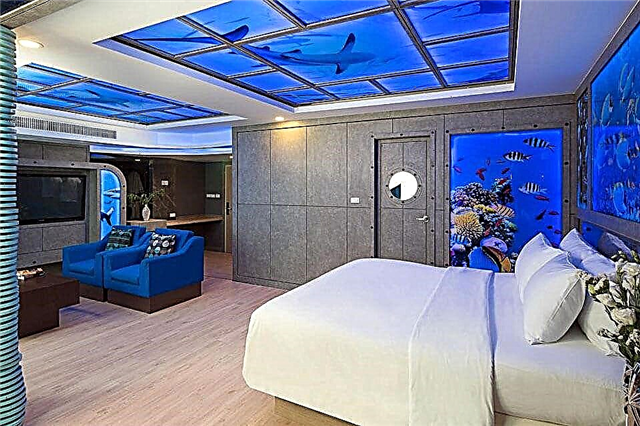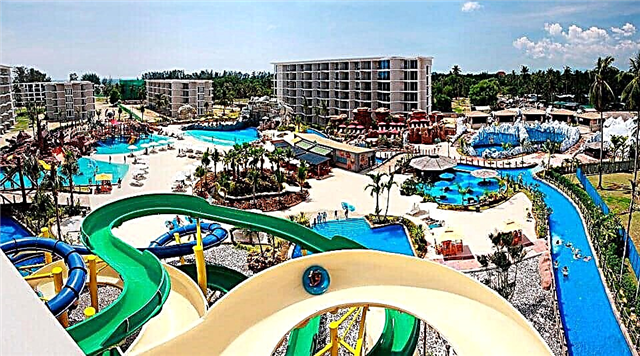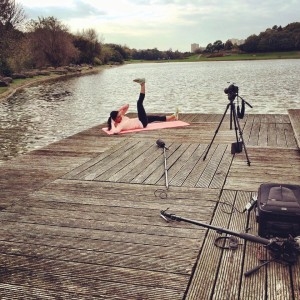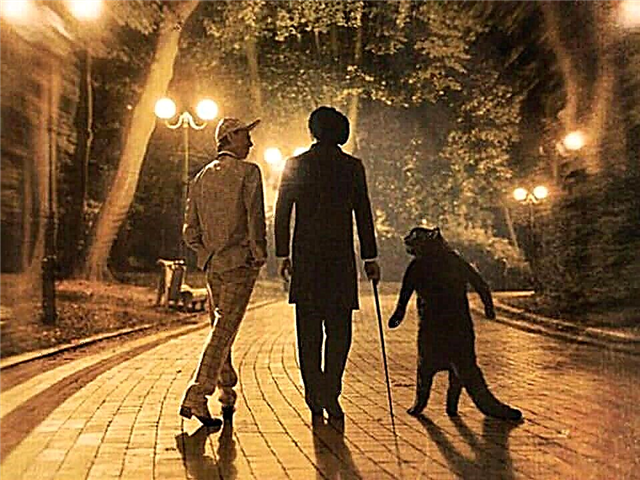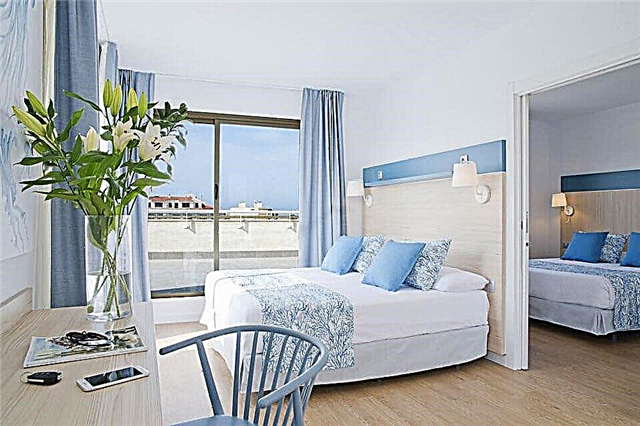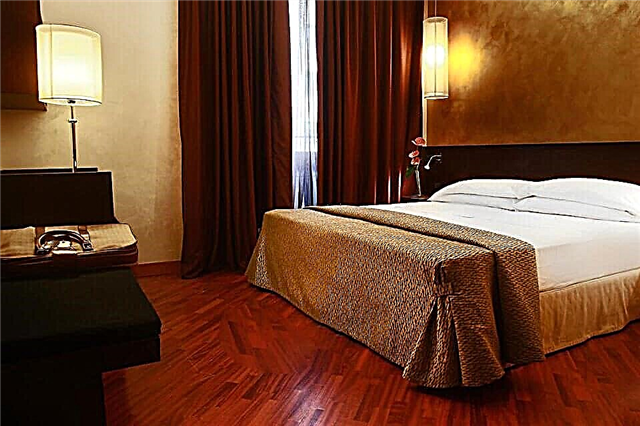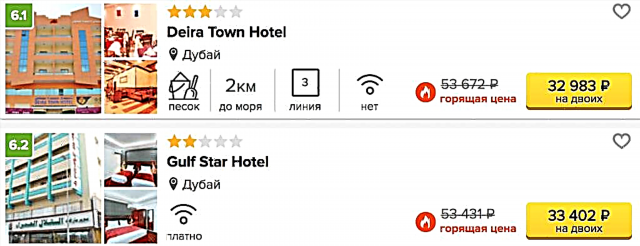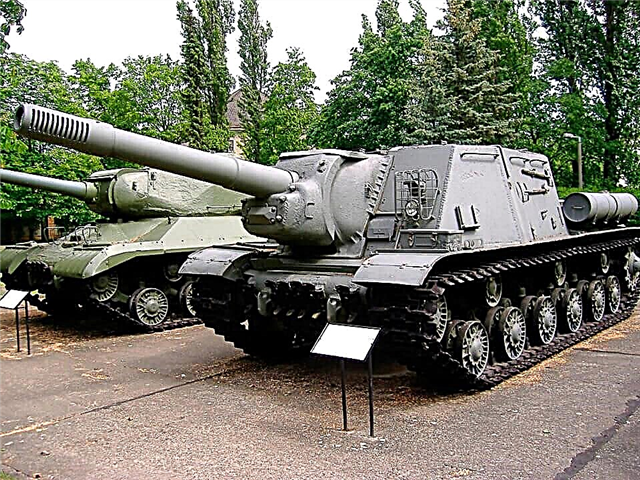The main German city with Slavic roots appeared on the world map in the 13th century. Having gone through many ups and downs, today the 3.6 million metropolis is a place full of charm, positive energy and world famous attractions. It will take at least a month to get to know him closely. But it doesn't matter if you have only 72 hours for the first date with the capital of Germany. Explore our travel guide before your trip and find out how to properly plan your stay and what to see in Berlin in 3 days on your own.
How to get from the airport to the city center

The capital of Germany has two international airports. Russian tourists flying from Moscow on flights of Pobeda, Utair, S7 Airlines and RusLine are met by the northern Tegel airport. It is located within the city limits, so the road from the terminal to the center by public transport will take no more than 25-30 minutes. You can take buses:
- route TXL. From Tegel, the bus leaves every 10 minutes and goes to the main train station (Hauptbanhof) (16-17 minutes) and then to Alexanderplatz (about 30 minutes);
- routes X9 and 109. They take you to Zoologischer Garten West Station in 20 minutes.
If you fly with Aeroflot or Mongolian Airlines from Moscow Sheremetyevo or Rossiya Airlines from St. Petersburg Pulkovo, then your destination is Schönefeld southern airport, located outside the metropolis. There is a railway station 75 m from the terminal.
From her go to the center of Berlin:
- Regional trains of the lines RE7 and RB14. Travel time - 25 minutes (to Alexanderplatz station). The interval of movement is 30 minutes.
- City train S9. She will take you to Alexanderplatz in 37 minutes.
The X7 regular bus departs from Schönefeld every 10-15 minutes, but it only runs to the Rudow metro station (U7) on the outskirts of the capital.
1 day
The first impression is the most important. Start your journey with the most famous landmarks, and then your acquaintance with the capital of Germany will grow into a real friendship. Many of the iconic places are within walking distance from each other, some need to be reached by public transport. We advise you to take bus number 100. Its route starts near Alexanderplatz and passes by the Cathedral, the Brandenburg Gate, the Reichstag, the Bellevue Presidential Palace and the Kaiser Wilhelm Church.
Reichstag

The place where the history of the Federal Republic of Germany is made is the main point of many walking routes in Berlin. The mighty building, located between the embankment of the River Spree and the Tiergarten park, was erected in 1894 for the new parliament of the reunified Germany. The construction lasted 10 years and devastated the state treasury for 30 million marks. The brainchild of the architect Paul Valott was destined for a difficult fate.
Wanting to blacken the rival communists in the eyes of voters, in 1933, supporters of the Nazi Party, which was striving for power, under the leadership of Hitler, staged an arson that destroyed part of the dome and the interior. 1945 became an even more terrible tragedy. In the eyes of the soldiers of the Soviet army, the parliament building was a symbol of Nazi Germany. The Reichstag met the end of the war in ruins. Restoration work started in 1958. Only 19 years later the Reichstag was restored to its former beauty.
The building is 137 m long and 47 m high and combines the styles of Classicism, Renaissance and Baroque. The facade is decorated with massive columns, and the roof is decorated with 4 towers, symbolizing the lands that became part of Germany in 1874. Inside there is a room for plenary sessions of the German Bundestag. The grandiose structure is crowned with a dome of glass and steel. You can climb it as part of an excursion (preliminary registration is required).
Brandenburg Gate

A striking example of the classical architectural style - the triumphal arch that closes the Boulevard Unter den Linden - is a symbol of peace and the reunification of the country. In 1949, the Brandenburg Gate entered the forbidden territory, marking the era of the split between Germany and Berlin. Public access to the historical monument was opened only in 1989. Today, public holidays are celebrated here and important events are held here.
On the night of January 1, thousands of local residents and guests of the metropolis gather at the Brandenburg Gate to celebrate the New Year under the clink of glasses and salutes. The historical building owes its appearance to Kaiser Wilhelm Friedrich II. By his decree in 1791, the road to Brandenburg was decorated with a ceremonial arch with two rows of imposing Doric columns.
Two years later, a sandstone structure 26 m high and 65.5 m wide was crowned with a 6-meter quadriga. For those of you who have been to Athens, the Brandenburg Gate will remind you of the Propylaea of the Acropolis, which served as a role model for the Prussian architect Karl Gottard Langgans.
Gendarmenmarkt square

Further, the path goes along the boulevard Unter den Linden, framed by buildings of the XVIII-XIX centuries. Walk to the intersection with Charlottenstraße, turn right and in 4 minutes you will be in one of the most beautiful squares in Europe. Today they enjoy the tranquility, grace of architectural monuments, melodies of street musicians and Open Air concerts.
And 300 years ago, on this place, located at that time in the suburbs of Berlin, stables and barracks were located, in which cavalrymen of the elite gendarme regiment were quartered. The Gendarmenmarkt comprises an architectural trio of stately buildings located around the white marble monument to Friedrich Schiller. Like looking in a mirror French and German twin cathedrals, built at the beginning of the 18th century.
Between them is the neoclassical Concert Hall, modeled after the National Theater destroyed by World War II bombing. Today, it hosts concerts of symphonic and chamber music.
Checkpoint Charlie

Turning off the Gendarmenmarkt onto Friedrichstrasse and walking along it 750 m (towards the U Kochstrasse metro station), you will see an iconic place reminiscent of the time when a concrete wall cut through the German capital. Checkpoint Charlie is one of three American checkpoints that emerged in the divided city during the Cold War. The task of the checkpoint was to control the movement of representatives of the Allied countries between parts of the divided Berlin.
In 1961, it became the arena on which the tank confrontation between the troops of the USSR and the United States unfolded, which miraculously did not end with the Third World War. Today, on the site of Checkpoint Charlie, demolished in 1990, there is a wooden booth imitating the original, at which two "border guards" dressed in American uniforms are on duty. Across the street is the Berlin Wall Museum.
Its collection filled with tragedy bears witness to numerous attempts to escape across the guarded border. Among the exhibits are a hot air balloon, a miniature submarine, chair lifts and other gimmicks designed with one goal in mind - to escape from the strong embrace of the GDR.
Berlin Cathedral

For the next attraction, return to Unter den Linden and walk 800m towards Alexanderplatz. On the left, between the embankment of the Spree and the green lawn of Lustgarten, a grandiose structure rises, whose dome soars to the heavens to a height of 98 m. church and family crypt of the members of the Hohenzollern dynasty.
All those entering the temple are greeted by the figure of Jesus Christ, in a blessing gesture frozen over the arched portal. The Silesian granite building is richly decorated with sculptures, bas-reliefs, columns and sandriks. This splendor is crowned with a dome with a diameter of 33 m, adjacent to small chapels. The strong in spirit and body can climb 270 steps.
The interior decoration of the temple matches the majestic architecture. The main objects of the luxurious interior are the marble altar and the splendid organ by Wilhelm Sauer. Representatives of the ruling family of the Hohenzollerns are buried in the crypt of the cathedral in the family tomb.
Alexanderplatz

Back in 1272, a place of execution and a hospital for lepers appeared on the site of the present Alexanderplatz, and at that time the territory hidden from city residents by a fortress wall. The Thirty Years War made its own adjustments, destroying many buildings and half of the population. To improve protection, a new fortress was erected, and the former excluded zone entered the city limits. Alexanderplatz owes its modern name to the Russian Emperor Alexander I, who visited Berlin in 1805 to sign an agreement on the creation of an anti-Napoleonic coalition.
Today, noise and chaos reign in the oldest square of the capital. Street musicians and dancers are performing, yellow trams are running along the rails, office workers are scurrying about and numerous tourists are flashing their camera lenses. You can love or hate Alexanderplatz, but you cannot pass by it indifferently. Here are located ancient buildings, faceless structures of the GDR times, large shopping centers and famous sights: Peace Clock, Red City Hall, St. Mary, fountains "Neptune" and "Friendship of peoples".
Berlin TV Tower

The most recognizable landmark of Alexanderplatz is the highest building in Germany - a reinforced concrete structure 358 m high. The idea of building, overshadowing all historical buildings with its gigantic dimensions, was born in 1965 by Walter Ulbricht, the leader of the Communist Party of the GDR. Four years later, a TV tower rose over Berlin, crowned with a steel ball and a 118-meter antenna.
If you are not dizzy, go up to the observation deck or visit the Sphere restaurant. Its slowly revolving hall with panoramic windows will provide an opportunity to admire the beautiful views of the metropolis from a 207-meter height. The Celestial menu will delight you with classic European cuisine: Berlin chopped cutlets, tomato puree soup, trout fillet with citrus sauce and a lamb medallion. Lunch will cost 15-25 euros, for dinner you will have to pay 35-60 euros.
Ticket for a quick visit to the TV tower - 21.50 €
Priority entrance: Berlin TV Tower with window seat - 23.50 €
Fast track and table not by the window - 19.50 €
Priority entry and VIP dinner - 93.90 €
Nikolaiviertel

850 meters from the TV tower, you will find the historic district, whose antique lanterns and cozy "toy" houses are reflected in the waters of the Spree. This is Nikolaiviertel (Nikolai's quarter). Walk down the narrow cobbled streets, have a beer on the open veranda of a traditional German restaurant, visit one of the tiny shops of local merchants, and you will get an idea of what Berlin looked like during the Middle Ages.
The modern Nikolaiviertel is a recreated imitation of a quarter that was completely destroyed during the Second World War and returned to life in 1987. It got its name from the church of St. Nicholas - the first city church in terms of seniority, according to archival documents, created in 1230–1250. Currently, the neo-Gothic brick basilica, decorated with two green spiers, is used as a museum. Its permanent exhibition informs about the history and architectural features of Nikolaikirche.
Kaiser Wilhelm Church

A younger, but no less famous temple - the Kaiser Wilhelm Church - adorns West Berlin. From Alexanderplatz you will be taken here by the city train (lines S 3, 5, 7, 9 to the station S + U Zoologischer Garten) or buses No. 100 and 200 (stop Breitscheidplatz). Protestant temple, built in 1891-1895. as a sign of respect to the German emperor Wilhelm I, better known as the Church of Remembrance (Gedehtniskirche).
In 1943, an Allied Air Force attack almost completely destroyed the structure. The decision to restore the ruins came only 14 years later, and after another 4 years, the Gedächtniskirche again appeared before the eyes of Berliners. The western tower of the renovated shrine remained dilapidated, reminding descendants of the horrors of war.
Cars roar around, and hundreds of passers-by rush about their business. But one has only to go inside the crippled building - and you will find yourself in a world full of saturated blue light and ringing silence. The ceiling and walls are a multi-colored mosaic; the figure of the Savior hovers over the altar, arms outstretched. On Sundays, evangelical services are held here, and prayers for peace are offered on weekdays. There is also a memorial complex in the building.
Kurfürstendamm

The trading Mecca of the metropolis - Kurfürstendamm boulevard or Kudamm, as the locals call it, originates from Gedehtniskirche. The history of the street takes us back to 1542, when a horse trail appeared in the western part of the city, connecting the royal palace with the hunting castle in the Grunewald estate. Time passed. In 1871, as a result of the reunification of German lands, the German Empire was born. Its Reich Chancellor, Otto von Bismarck, decided to give the narrow path a metropolitan gloss.
In 1886, the first tram thundered along the pompous 3.5-kilometer boulevard. Since then, life has been in full swing here. Shopaholics all over the world speak of this place with awe. Among the chic restaurants, cozy cafes and houses, lacy balconies and ornate bas-reliefs, there are boutiques of famous designers of clothes, shoes and jewelry. Stores decorated with signs of Louis Vuitton, Chanel, Hermes, Dior, Bvlgari will help you to immerse yourself in the world of haute couture ... At the beginning of the promenade there is a budget C&A and a 7-storey Karstadt shopping center.
Spree and Landwehrkanal cruise

We recommend ending an exciting day and relaxing after the cultural Berlin marathon on the deck of an excursion cruise on the Spree. Pleasure boats leave from the docks near the Cathedral, the Kanzleramt, Friedrichstrasse and Hauptbahnhof train stations.
The most popular tour is an hour-long river cruise, during which you will see the sights of Berlin from a different angle: the House of World Cultures, the Government Quarter, the Reichstag, Museum Island, Cathedral, TV Tower and Nikolaiviertel. Those of you looking to spend more time on board can take a cruise on the Spree River and the adjacent Landwehrkanal. In addition to the already listed iconic places, on your way you will meet Bellevue Palace, Charlottenburg Castle, 64 bridges and high-rise buildings of Potsdamer Platz.
Spree cruise (2.5 hours) - 18.50 €
4-hour river cruise on the Spree and Landwehrkanal - 23 €
Hop-on hop-off bus tour 24 or 48 hours - 22 €
2nd day
The German capital has about 170 museums and art galleries. Naturally, even the most popular of them cannot be visited in such a short time. Therefore, we suggest that you familiarize yourself with the most interesting museums and choose which expositions to devote a day to.
Museum Island

A galaxy of unique museums unparalleled in the world is located in the northern part of the island formed by the Spree River. The starting point of the ensemble, consisting of five historical buildings, was the building of the Old Museum, erected in 1830 by the architect Schinkel. The last in the architectural constellation is Pergamon, built in 1930.
The magnificent complex includes:
- Bode Museum, whose collection includes household items and works of art from the Byzantine and Roman empires, Renaissance sculptures and a numismatic office.
- Pergamon, representing the masterpieces of ancient art and the cultural heritage of Asia and Islamic states. The treasures of the collection are the Altar of Pergamum and the Ishtar Gate.
- A new museum that focuses on the collection of ancient Egyptian artifacts, including age-old papyri, sarcophagi, masks, ritual accessories of the priests and the flagship of the exposition - the bust of Nefertiti.
- An old museum reflecting the art of the ancient Hellenes, Etruscans and Romans. Among the relics are sculptures, military equipment, jewelry, medallions, frescoes and antique gravestones.
- The old national gallery inviting you to get acquainted with the masterpieces of the geniuses of sculpture and painting of the 19th century. Works by European authors working in the directions of Romanticism, Classicism, Impressionism and Modernism are presented on three floors.
The entrance fee to the Old Museum and the Old National Gallery is 10 €. To view the collections of other museums, you need to pay 12 €.
Skip-the-line: tickets to the Pergamon Museum - 12 €
New Museum: skip-the-line ticket - 12 €
Karlshorst Museum

Zwieseler Str. 4
The uneasy relations between the two countries, which were bitter enemies more than half a century ago, are told by the expositions of the museum located in Karlshorst, a district of East Berlin. Here, in the officers' club, on the evening of May 8, 1945, an event took place that determined the further course of history. Representatives of the Wehrmacht and the Allied coalition signed the act of surrender of Nazi Germany. In May 1995, after the withdrawal of the last Soviet troops from the Federal Republic of Germany, the German-Russian Karlshorst Museum opened its doors here for the first time.
At the entrance to the gray two-story building, visitors are greeted by a T34 tank. In the rooms with gloomy black walls, there are thousands of original exhibits collected around the world. Here you will find military uniforms, weapons, posters, diaries of concentration camp prisoners, thousands of field letters, archival photographs and, of course, the historic surrender hall. The entrance to the museum is free.
Museum of the Human Body "MeMu"

Panoramastraße 1A
In 2015, the world's first museum dedicated to the human body opened on Alexanderplatz. Its shocking exhibits are plates - nothing more than the corpses of people and animals. They have been pretreated to replace fats and tissue fluids with reactive polymers. This method of embalming was invented by an eccentric pathologist and concurrently the founder of the museum, Gunther von Hagens, back in 1979.
A total of 220 anatomical exhibits are exhibited here. Among them are human organs, animals and whole bodies of real people who voluntarily decided to turn into plate after death. According to the creator of the collection, the exhibition is designed to acquaint visitors with the peculiarities of the human body, diseases and anomalies. Many objects are provocative in nature.
Attention! Plates can cause feelings of rejection, disgust and fear. Before deciding to visit MeMu, take a look at the photographs of the collection.
Natural History Museum

Invalidenstraße 43
The history of the Berlin Museum of Natural History, founded with the participation of Humboldt University, dates back to 1810. The exhibition on the evolution of the universe and man moved to a magnificent building with powerful columns and huge windows in 1889. Over the more than 200 years of its existence, the collection has grown to over 30 million specimens, representing four main themes: space, mineralogy, paleontology and zoology.
The exposition of the museum is opened by the central atrium. The colossal skeleton of a giraffat-titan dinosaur appears before the eyes of visitors. The unique giant, 13.27 m high and 22 m long, is surrounded by life-size prehistoric dinosaurs. Among them are centrosaurus, pterodactyl, allosaurus and the primitive bird Archeopteryx. Other expositions are no less interesting. Behind the glass showcases, thousands of models and stuffed representatives of the fauna, semiprecious stones, metals, fragments of meteorites are exhibited ... The pearl of the collection is the Tristan Otto Hall - the only complete Tyrannosaurus rex skeleton in Europe.
Modern Art Museum

Alte Jakobstraße 124-128
If you understand and appreciate the conceptual movements of 20th century art, then head to the Museum of Modern Art, located in the building of the now defunct Hamburg Station. The former platforms and waiting rooms housed 2,000 exhibits created in the styles of Pop Art, Expressionism, Avant-garde and Modernism. In addition to sculptures and paintings, the gallery contains photographs and installations.
Walking through the spacious halls, you will come across unusual exhibits. For example, what does a straw-decorated downspout plane mean? The idea of the creators of the museum is to convey to the visitors the idea that in contemporary art the mastery of the author is often determined not by the work he created, but by his leitmotif. So that the objects do not seem meaningless and ridiculous to you, use the services of an audio guide.
The ticket price is 10 €.
Madame Tussauds museum

Unter den Linden 74
240 m from the Brandenburg Gate, you will meet the most revered persons in the world. Of course, we are not talking about living people, but about their wax copies, which are sometimes difficult to distinguish from the originals. The Berlin branch of the London Wax Museum, created in 1835 by the talented sculptor Maria Tussauds (nee Grossholz), invites guests of the city to meet celebrities every day.
On an area of 2,500 m² in 9 thematic rooms, 120 statues are exhibited. Karl Marx, John F. Kennedy, Mikhail Gorbachev, Albert Einstein, George Clooney, Leonardo DiCaprio, Angelina Jolie, Rihanna and Michael Jackson appear before the visitors as if they were alive. Tourists are allowed not only to touch the exhibits, but also to take pictures with them. Pictures of you giving a speech next to Angela Merkel or hugging football star Ronaldo will take a worthy place in your photo album.
The price of a standard ticket is € 21.00.
German Historical Museum

Unter den Linden 2
Boulevard Unter den Linden opens the Zeughaus building decorated with relief compositions and sculptures, which appeared near the embankment of the Spreekanal in 1730. The galleries of the Baroque building, built in honor of the Emperor of Prussia Frederick I, housed the royal arsenal. After the split of Germany, the collections of the Museum of the History of the GDR were exhibited here. In 1994, an exhibition moved to the Zeughaus from the Reichstag, whose exhibits became the first in the collection of the new German Historical Museum.
Now, on an area of 8,000 m², numerous relics appear before the audience as illustrations of the past. Passing from hall to hall (there are 23 of them in total), guests get acquainted with the era of the formation of the primitive communal system, the domination of the Roman Empire, the era of the Hohenzollern dynasty, the wars in which Prussia participated, and then the united Germany, as well as the period of schism and subsequent reunification state.
The cost of the visit is 8 €.
Day 3
We propose to spend the third day in the German capital in the central zoo - the green jungle in the western part of the city. But if you are not attracted by the beauty of the world of flora and fauna, devote this time to exploring the stone jungle. Start your day exploring the Berlin Wall, wander the flea market in Mauerpark, admire the metropolis from a hot air balloon gondola and visit the heart of modern Berlin at the famous Potsdamer Platz.
Berlin Zoo

Hardenbergplatz 8, Budapester Strasse, 32
A must-see point of the excursion program for tourists coming to Berlin with children is a visit to the animal kingdom - the largest European landscape zoo located in the western part of the metropolis. On a well-groomed green area in spacious open-air cages, more than 19.4 thousand representatives of the world of fauna coexist. The three-story building of the aquarium is home to 13 thousand reptiles, amphibians, fish and insects.
It will take several hours to get around the area of 35 hectares. For the convenience of visitors, the park is equipped with a restaurant, cafe and recreation areas.For younger guests, the Berliner Zoo has prepared a huge playground and a paddock with domestic animals: tame kids, sheep and pigs. Even more entertaining going to the zoo will make the regular feeding of its four-legged and winged inhabitants and the show, which is organized by a friendly company of sea lions every day at 15:15.
Memorial of the Berlin wall

Bernauer Straße 111
The 28 years of tragedy - the time when Germany and its capital were separated by a 3.6-meter concrete fence - are today reminiscent of the fragments of this sinister structure scattered around the city, the double line of paving stones and memorial centers dedicated to the Berlin Wall. One of these complexes appeared on Bernauer Straße in 2010 and was originally called the "Memory Window". On the site where the border zone passed from 1961 to 1989, a monument was erected - a monument made of rusty steel, on which photographs of residents who died while trying to cross the border were placed.
Today, the memorial complex, which stretches for 1.4 km and covers an area of 4 hectares, includes watchtowers, a chapel erected in 2000 on the foundations of a destroyed church, and a documentation center. An inconspicuous gray building keeps personal belongings of citizens, archival photographs, testimonies and audio recordings within its walls. There is an observation deck on the roof.
Mauerpark

Gleimstraße 55
If the last day of your stay in Berlin fell on a Sunday, devote a couple of hours to a walk around the territory that was adjacent to the Berlin Wall until 1990. Today, the former wasteland is full of life. Since 2004, the city's largest flea market has been located here. While flirting through the long shopping aisles, you can stumble upon a long-dead gramophone of the early 20th century, old magazines and books, silverware, moth-eaten shawls, snuff boxes, candelabra, boxes, retro clothes ...
Among all this antiques, there are original souvenirs, vintage jewelry and even cheap fur coats. However, the vast territory in the Prenzlauer Berg area is not only a favorite of traders. Every day street musicians, mimes, dancers, clowns and magicians demonstrate their art in Mauerpark, skateboarders show breathtaking tricks, freaks and fans of karaoke gather crowds of onlookers. People come here to forget about everyday problems in a relaxed atmosphere, have a glass or two of beer and have a small picnic on the green lawn.
Hot air balloon ride Die Welt

Zimmerstraße 95-100
Berlin never ceases to amaze its guests. Those who want to feel themselves in the role of balloonists and look at the beauties of the city from a height of 150 m will enjoy wonderful entertainment every day - ascent in a hot air balloon. It will not be possible to fly freely over the capital - the balloon is securely attached to the winch with a strong steel cable. But an unforgettable experience and a beautiful view of the center of the capital of Germany are guaranteed!
A helium-filled balloon that can hold 30 people at a time in a gondola is one of the largest passenger balloons on the planet. The flight session lasts 15 minutes. Important! For safety reasons, the ascent will not take place during strong winds. The purchased voucher can be used on another day. Working hours: from 10:00 to 22:00 (01.04–30.09) and from 11:00 to 18:00 (01.10–31.03).
Ticket prices: 23 € (adult), 18 € (youth 11-17 years old) and 10 € (children 3-10 years old).
Potsdamer Platz

Glass, steel and concrete - this is how Potsdamer Platz appears to tourists - the place where the heart of the modern city beats. Already in 1838, a railway station appeared here, and at the beginning of the 20th century - the first traffic light in Germany to regulate busy street traffic. The bombs of the Second World War turned the square, which used to be full of life even at night, into a huge wasteland. With the construction of the Berlin Wall, it became a guarded exclusion zone along the border between the GDR and the Federal Republic of Germany.
The revival of the legendary Potsdamer Platz began in 1994. World famous architects Helmut Jan, Hans Kohlhoff and Renzo Piano worked on the creation of a modern mini-district, skyscrapers and futuristic structures that set off historical sights. Thanks to them, a 103-meter skyscraper "Kolhoff", a 26-storey skyscraper of the German Railways holding, restaurants, casinos, nightclubs, shops, premium-class apartments, Daimler City and Sony Center quarters appeared in 6 years.
Sony Center

The main attraction of Potsdamer Platz is the Sony Center - an architectural ensemble consisting of 7 ultra-modern buildings, the construction of which cost 600 million euros. An IMAX cinema, an elite residential complex, restaurants, offices of large holding companies, including the European headquarters of Sony Corporation, surround the open inner square. The remains of the famous Grand Hotel Esplanade, destroyed by the war, are integrated into one of the walls of the structures. All this splendor is crowned by a dome of steel and glass, symbolizing the Japanese Mount Fujiyama.
Sony Center is especially beautiful in the evening. Multi-colored beams of spotlights illuminate the spectacular hipped roof, creating a unique play of color. At this time, there is nowhere for the apple to fall. During the warmer months, the internal forum is filled with moviegoers and restaurant goers. In December, when the magical time of Advent and Christmas comes, a huge cone-shaped lamp sparkles with blue lights. Twinkling fantastic creatures hide among the numerous trees, hot mulled wine flows like a river and fabulous performances are played out.
5 useful tips or how to save money in Berlin
The capital of Germany is included in the list of large European cities with democratic prices. However, even here the tourist meets with necessary and sometimes unforeseen expenses. If the word "saving" is not an empty phrase for you, follow the advice on how not to empty your wallet during your Berlin trip.
- Traveling in the main German metropolis is not a cheap pleasure. A standard ticket for using any type of public transport for 120 minutes costs 2.80 €. If you plan to actively move around the city, buy a WelcomeCard. It gives you unlimited travel and discounts (up to 50%) on restaurants, excursions and famous attractions (including the Berlin TV Tower and Madame Tussauds).
The cost of the card for 72 hours is 28.90 €. The paid WelcomeCard can be collected at designated points of the airports, the main train station, tourist information centers at the Brandenburg Gate, the Europa-Center shopping mall and at the Hotel Park Inn by Radisson on Alexanderplatz.
- Are you a connoisseur of unique artifacts and the main purpose of your trip to Berlin is to get acquainted with historical relics? Then purchase your Museumspass Berlin passport in advance and enjoy the collections of more than 30 famous museums and exhibition centers for 3 days. The subscription price is 29 €. For schoolchildren and students (subject to the availability of the appropriate certificate), the purchase will cost 14.50 €.
- Inexpensive restaurants and cafes in Berlin will help you save on food. In the afternoon you can have a snack with Turkish doner kebab (3.5 €), traditional Berlin sausage in Currywurst sauce (3.5 €), potato soup (3 €) or a juicy chop (7 €). You can enjoy tasty and cheap food at Mustafa Gemüse Kebap at Neue Promenade 7, Der Wurstler at Chausseestraße 12, Beer Garden at the Zollpackhof restaurant at Elisabeth-Abegg-Straße 1, Scheers Schnitzel at Warschauer Platz 18 or in the foot courts of large shopping centers.
- If you want to combine sightseeing with active shopping, choose the time of two-week sales for your trip, when the amount of discounts reaches 65%. Summer SALE starts on July 20-25. In winter, the hunting season for low prices opens on January 20-30.
- Choosing an inexpensive hotel in the center of Berlin, pay attention to the budget hotels of the Mercury chains (from 80 € per night), Ibis (from 60 €), Meininger (from 49 €), Novum (from 65 €) and Motel One (from 60 €) ... All of them are located within walking distance from metro stations and popular attractions.

